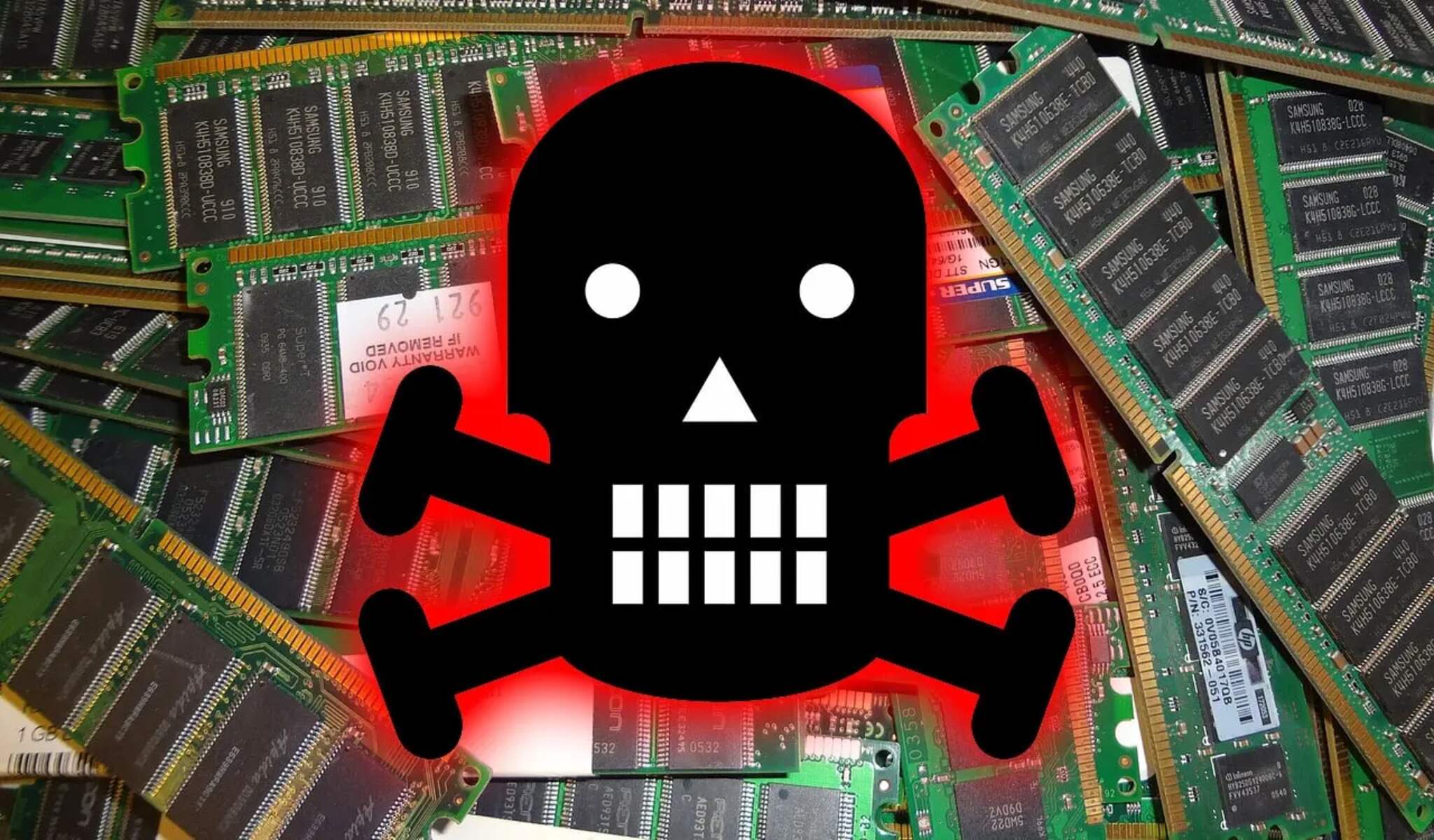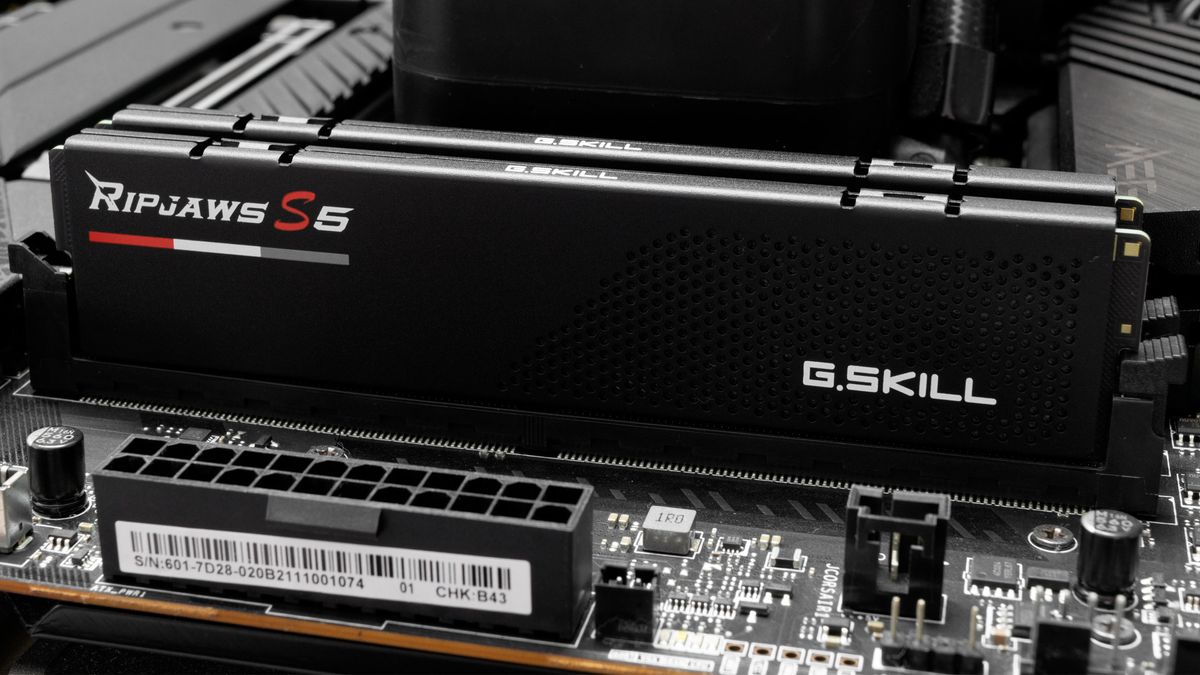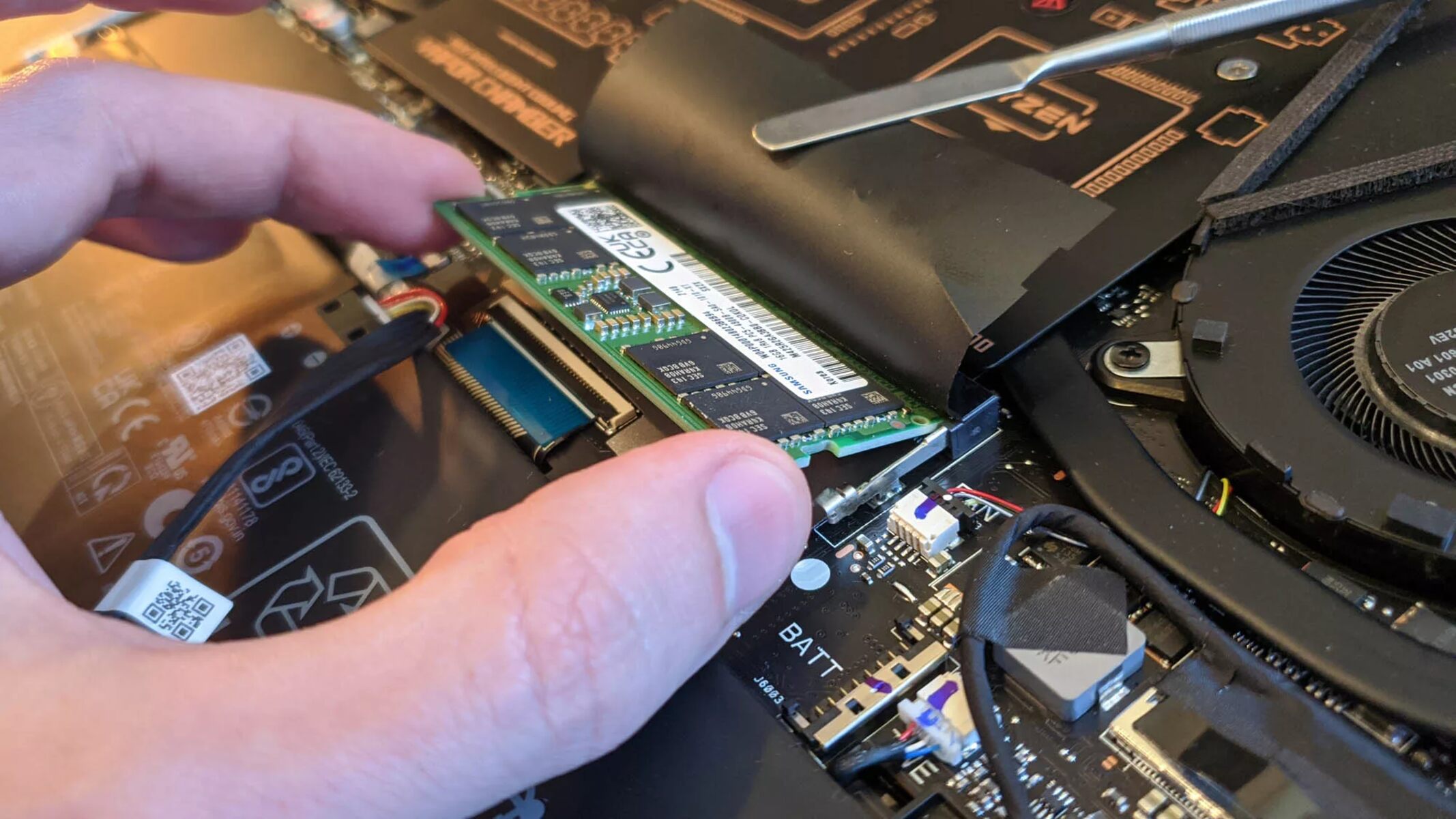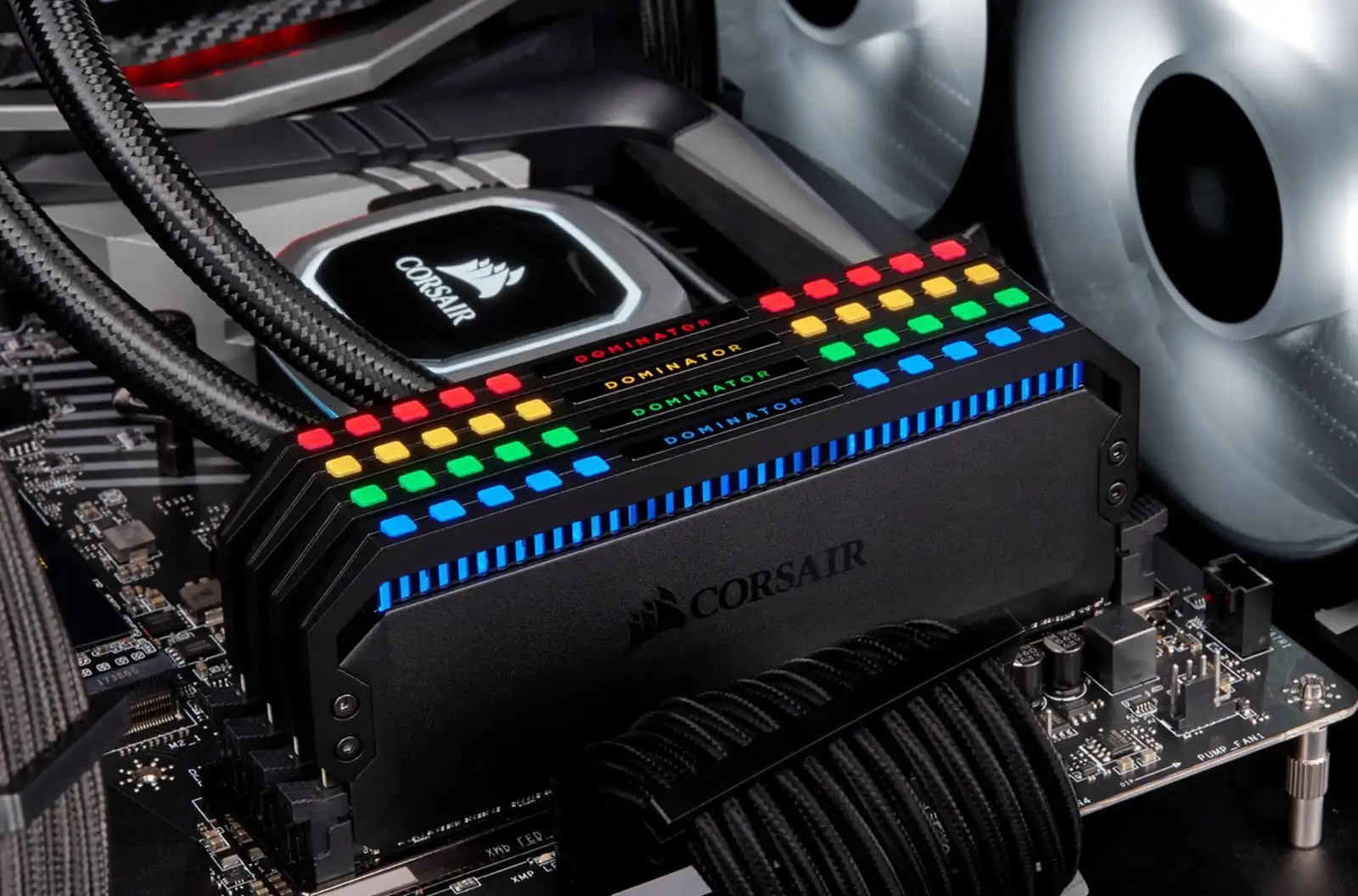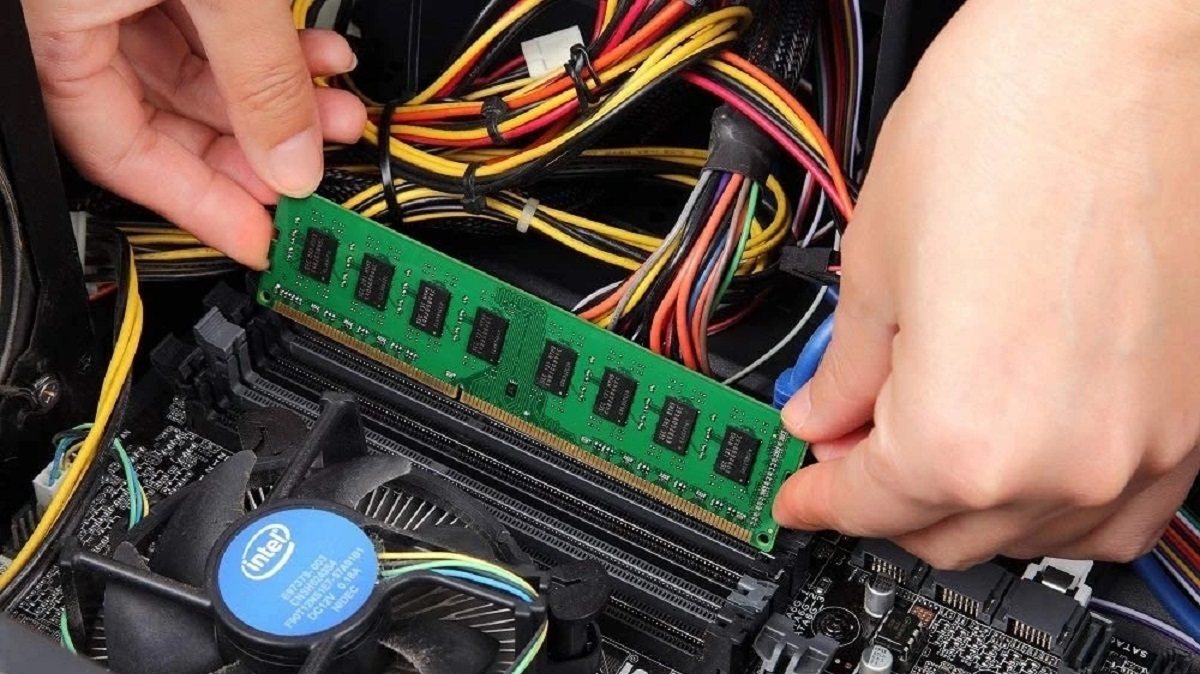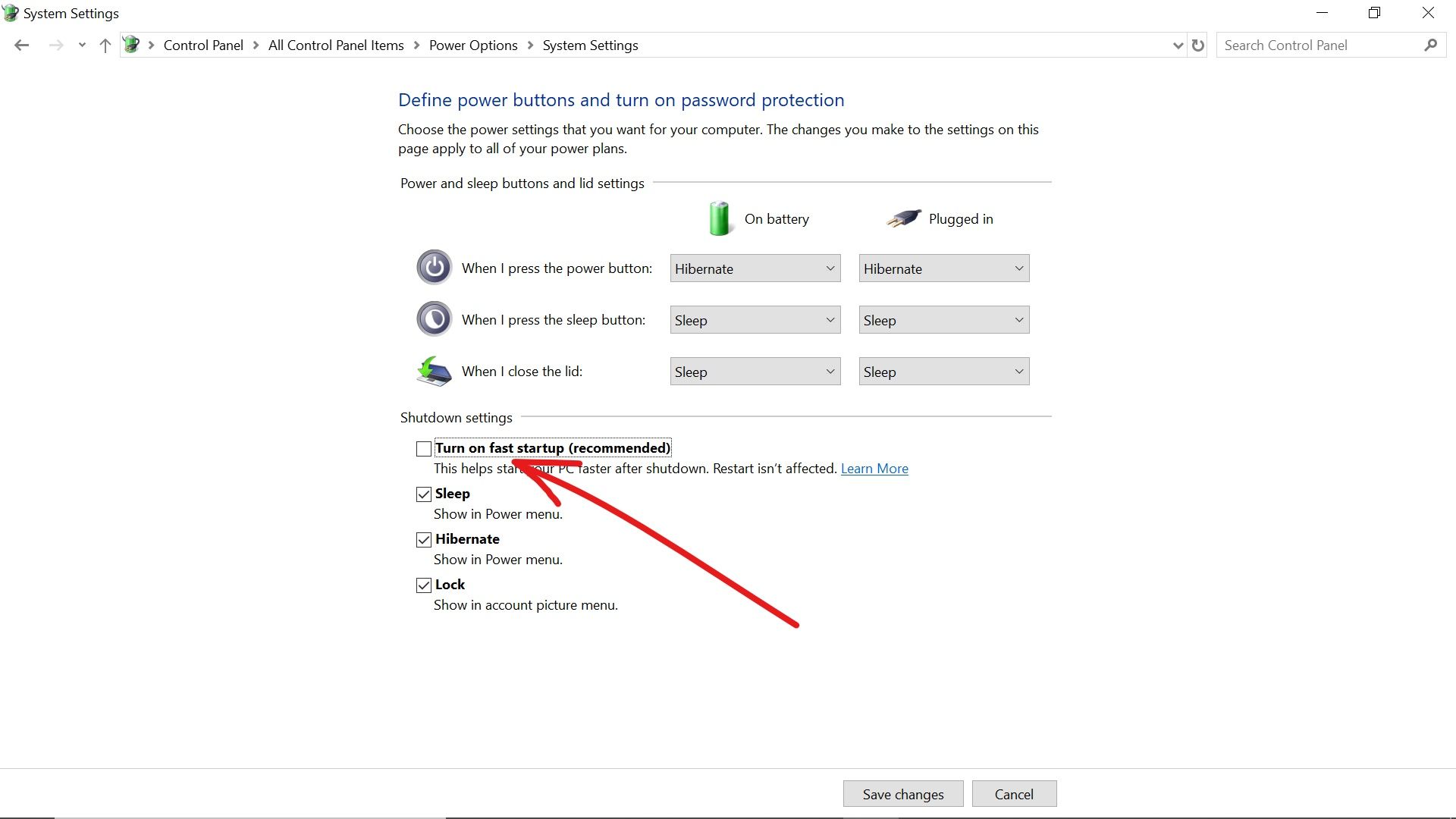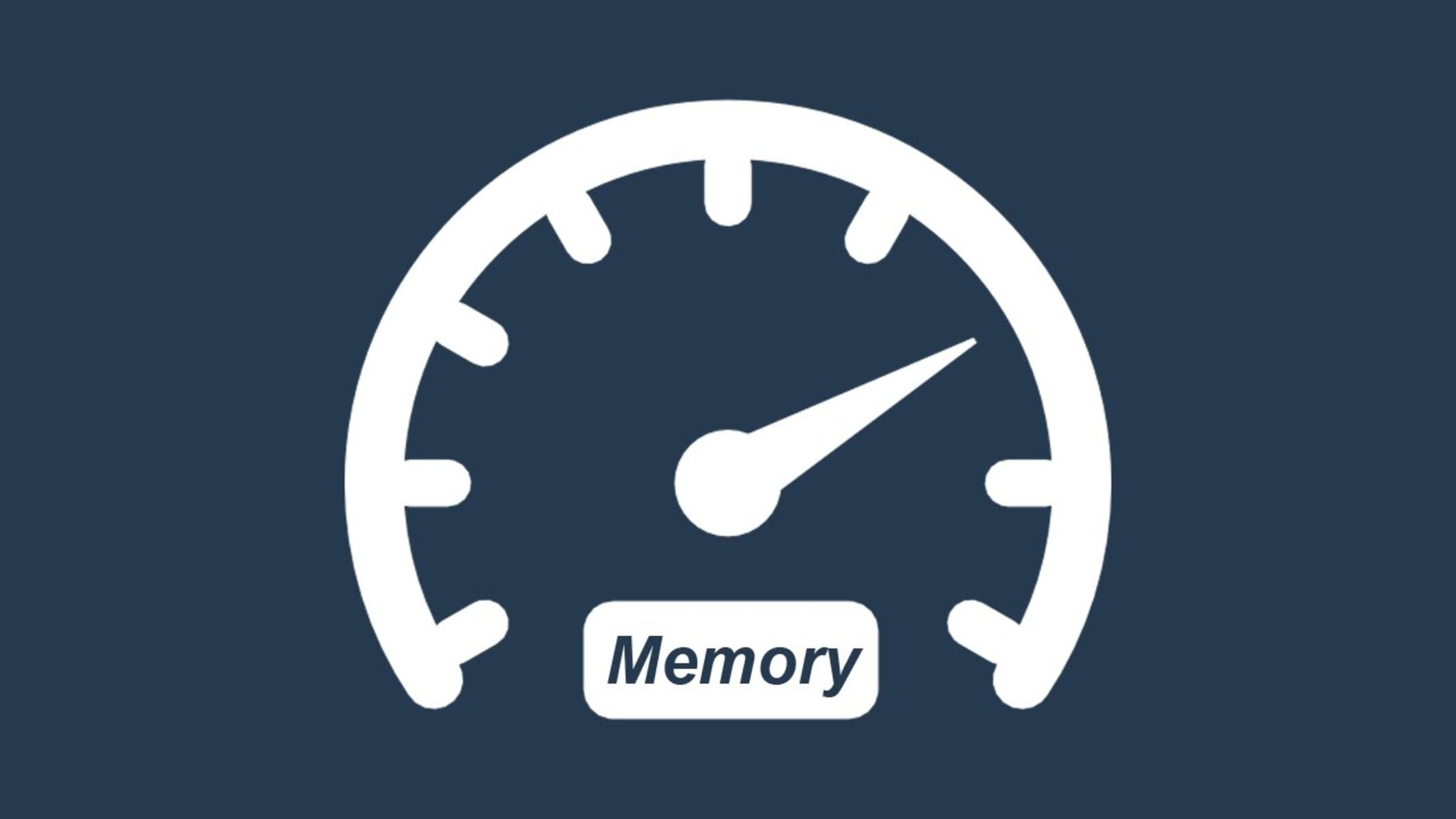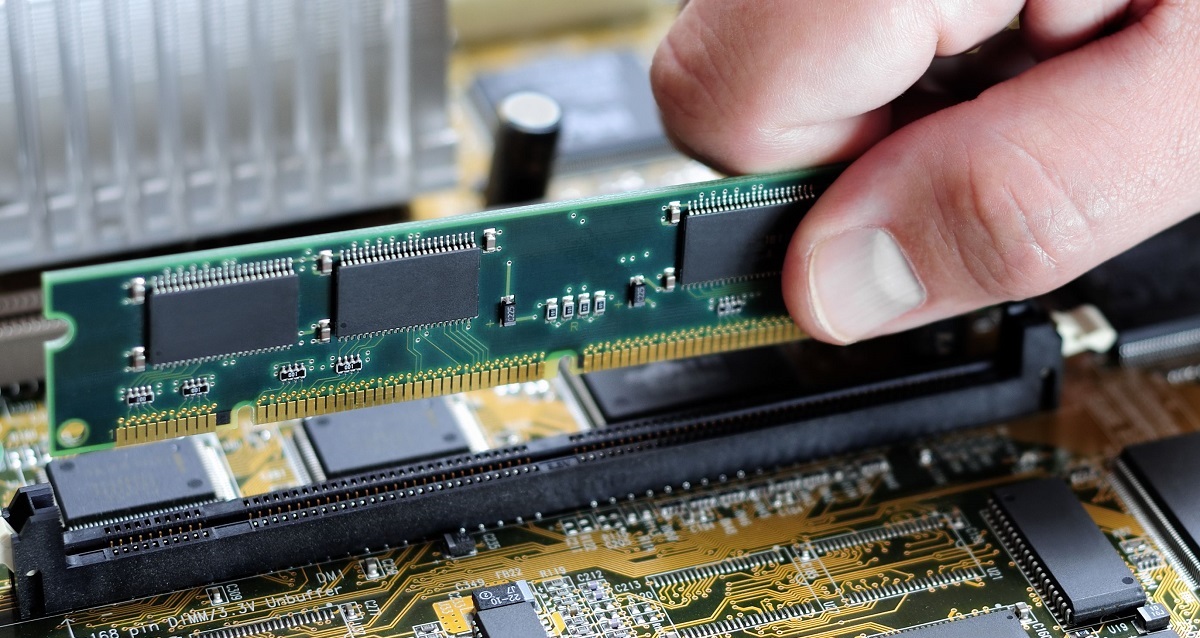Signs of Faulty RAM
A faulty RAM module can cause various issues with your computer’s performance. It is important to be aware of the common signs that indicate potential problems with your RAM. By recognizing these signs, you can take prompt action to diagnose and resolve any RAM-related issues.
Here are the most common signs of faulty RAM:
1. Random system crashes: If your computer suddenly crashes or reboots without any warning, this could be a sign of faulty RAM. The system may become unstable and unable to handle the data being processed, leading to crashes.
2. Blue screen of death (BSOD) errors: When your computer encounters a critical error, it may display a blue screen with an error message. Faulty RAM can contribute to these errors, causing frequent BSOD occurrences.
3. Frequent application crashes: If you often experience program crashes or freezes, it could be due to faulty RAM. When applications do not receive or process data correctly from the RAM, they may become unresponsive or crash.
4. Slow performance: Faulty RAM can significantly impact the overall performance of your computer. You may notice a considerable lag or delay in executing tasks, launching applications, or opening files.
5. Corrupted files: RAM errors can lead to data corruption, resulting in files becoming unreadable or inaccessible. If you encounter recurring file corruptions even after reinstallation or restoration, it could be a sign of faulty RAM.
6. Strange system behavior: Faulty RAM can cause strange system behavior, such as unusual error messages, sudden freezes, or unexplainable system glitches. These erratic behaviors can disrupt your user experience and affect your productivity.
7. Memory-related error messages: If you receive error messages related to memory issues, it indicates potential problems with your RAM. These messages may include phrases like “memory management error” or “out of memory.”
It is important to note that these signs alone may not always indicate faulty RAM, as they can overlap with other hardware or software issues. However, if you experience multiple symptoms mentioned above or have ruled out other potential causes, it is recommended to further investigate your RAM’s health.
In the next section, we will discuss how to check for faulty RAM and diagnose any potential issues.
Common Symptoms of Faulty RAM
Faulty RAM can manifest in various ways, causing noticeable symptoms that affect your computer’s performance and stability. Familiarizing yourself with these common symptoms can help you identify if your RAM is the culprit behind any issues you may be experiencing.
Here are the most common symptoms of faulty RAM:
1. System instability: One of the most prevalent signs of faulty RAM is system instability. Your computer may freeze, crash, or show unpredictable behavior, such as sudden reboots or shutdowns. These erratic actions can disrupt your workflow and hinder productivity.
2. Random reboots: If your computer restarts unexpectedly without any apparent reason, it could be due to faulty RAM. RAM-related errors can cause the system to fail and trigger an automatic reboot to protect data integrity.
3. Memory-related errors: Faulty RAM often leads to memory-related errors that appear during system start-up or while running applications. These errors may include messages like “Memory Management Error” or “Bad Pool Header.” If you encounter frequent memory-related errors, it is likely a RAM issue.
4. Application crashes: Faulty RAM can cause applications to crash or become unresponsive. When RAM fails to store or retrieve data properly, it can disrupt the execution of applications, leading to crashes or freezes.
5. Slow and sluggish performance: RAM is responsible for storing and accessing data quickly. If your computer experiences slow and sluggish performance, even while performing basic tasks, it could indicate faulty RAM. Insufficient or defective RAM modules can significantly hinder system responsiveness.
6. File corruption: Faulty RAM can corrupt data, causing files to become unreadable or damaged. You may encounter issues opening files or notice data corruption within files, leading to data loss or improper functioning of applications.
7. Failure to boot: In severe cases of faulty RAM, your computer may fail to boot altogether. The system may display error messages during the booting process or remain stuck on a black screen. If your computer consistently struggles to boot, RAM-related issues could be the cause.
It is essential to remember that these symptoms can also arise from other hardware or software issues. To confirm whether faulty RAM is responsible, you need to perform a series of tests and diagnostics, which we will explore in the next section.
By recognizing these common symptoms, you can take the necessary steps to address potential RAM problems and ensure the stability and functionality of your computer system.
How to Check for Faulty RAM
If you suspect that your computer is experiencing issues due to faulty RAM, it is crucial to perform a thorough check to identify the underlying problem. Here are the steps to help you check for faulty RAM:
1. Restart your computer: Begin by restarting your computer to see if the issues persist. Sometimes, system glitch or temporary software conflicts can cause similar symptoms as faulty RAM. A simple restart can resolve these temporary issues.
2. Run a memory diagnostic tool: Windows operating systems provide built-in memory diagnostic tools that can help identify RAM issues. To access this tool, click on the Start menu, search for “Windows Memory Diagnostic,” and follow the instructions to run the memory diagnostic tool. It will thoroughly test the RAM for any errors.
3. Use third-party RAM testing software: There are various third-party software programs available specifically designed to test and diagnose RAM. Memtest86 and HCI MemTest are popular options that provide comprehensive testing capabilities to identify faulty RAM modules.
4. Test RAM modules individually: If you have multiple RAM modules installed, it is possible that only one of them is faulty. To determine which module is causing the issue, remove all the RAM modules except for one and test your system. Repeat this process for each module, testing them one by one to identify the problematic module.
5. Swap RAM slots: Faulty RAM slots can also cause issues. Try switching the RAM modules to different slots on your motherboard to see if the problems persist. If the issues follow a specific RAM slot, it may indicate a faulty slot rather than the RAM module.
6. Check for dust and loose connections: Dust accumulation or loose connections can interfere with the proper functioning of the RAM modules. Make sure to clean any dust from the slots and ensure that the RAM modules are securely seated in their slots.
7. Consult a professional: If you are unsure about performing these tests on your own or if you lack technical knowledge, it is advisable to seek assistance from a computer repair professional. They can perform more advanced diagnostics and guide you through the process of resolving any RAM-related issues.
It is essential to note that these steps are intended to diagnose faulty RAM, and it’s always a good idea to backup your important data before performing any tests or making changes to your computer hardware.
In the next section, we will discuss the different tools available for testing RAM and interpreting the results obtained from these tests.
Steps to Diagnose Faulty RAM
If you suspect that your computer is experiencing issues due to faulty RAM, it is essential to follow a systematic process to diagnose and identify the problematic module. Here are the steps you can take to diagnose faulty RAM:
1. Step 1: Perform a visual inspection: Start by visually inspecting the RAM modules for any physical damage or signs of corrosion. Check for loose connections or bent pins. Ensure that the RAM modules are securely inserted into their slots.
2. Step 2: Restart your computer: Sometimes, issues with RAM can be transient. Restart your computer to see if the problem persists. If the issues disappear after the restart, it may indicate a temporary glitch rather than a faulty RAM module.
3. Step 3: Test with a single RAM module: Remove all but one of the RAM modules installed in your computer. Boot up your system and check if the issues persist. If the problem disappears with a particular RAM module removed, it may indicate a faulty module.
4. Step 4: Swap and retest: After identifying a potentially faulty RAM module, try swapping it with one of the other modules. Boot up your system and observe if the issue follows the suspected faulty module. If the same problem occurs with the new configuration, it confirms that the specific RAM module is indeed faulty.
5. Step 5: Test the suspected faulty module: To further validate the issue, test the suspected faulty RAM module on a different computer if available. If the same issues arise on another system, it provides more evidence that the module is faulty.
6. Step 6: Test RAM slots: Faulty RAM slots can sometimes cause issues. Test each RAM slot on your motherboard by inserting a known-good RAM module. If certain slots consistently produce errors or cause system instability, it suggests a problem with the slot itself.
7. Step 7: Use diagnostic software: Utilize diagnostic software tools like Memtest86 or HCI MemTest to perform extensive tests on your RAM. These tools will thoroughly scan the RAM and identify any errors or faults in the memory modules.
8. Step 8: Consult a professional: If you’re unsure about the diagnostic process or lack technical expertise, it is advisable to seek assistance from a professional. They can provide more advanced diagnostics and help you identify and resolve any issues with your RAM.
By following these steps, you can effectively diagnose and identify faulty RAM modules. Once you have determined that your RAM is indeed faulty, you can proceed with appropriate solutions or replacements to ensure optimal performance and stability of your computer system.
In the next section, we will explore different tools available for testing RAM and how to interpret the results obtained from these tests.
Tools for Testing RAM
When it comes to testing the health and functionality of your computer’s RAM, there are various tools available to help you diagnose any issues. These tools can perform comprehensive tests on your RAM modules and provide valuable insights into their performance. Here are some commonly used tools for testing RAM:
1. Memtest86: Memtest86 is a popular and widely trusted tool for testing RAM. It is a standalone program that can be booted from a USB drive or CD/DVD. Memtest86 runs a series of tests to check for errors in your RAM modules and provides detailed diagnostic information.
2. HCI MemTest: HCI MemTest is another reliable software tool designed specifically for testing RAM. It performs extensive memory tests including algorithms like Row Hammer and Bitfade testing. HCI MemTest offers advanced testing options and is suitable for users looking for more in-depth analysis.
3. Windows Memory Diagnostic: Windows users can utilize the built-in Windows Memory Diagnostic tool. To access it, simply type “Windows Memory Diagnostic” in the Start menu search bar. This tool performs a basic test on your RAM modules and provides a summary of any detected errors.
4. MemScope: MemScope is a comprehensive memory diagnostic tool developed by Corsair. It offers multiple test patterns to thoroughly evaluate the health of your RAM. MemScope can be run from a bootable USB drive or floppy disk.
5. Ultimate Boot CD: The Ultimate Boot CD (UBCD) is a collection of diagnostic tools that includes memtest86 and other memory testing utilities. By creating a bootable USB or CD using UBCD, you can access and run multiple RAM diagnostic tools.
6. Hardware diagnostics: Some computer manufacturers provide their own proprietary software for testing hardware components, including RAM. These tools, such as HP Diagnostics or Dell Diagnostics, can perform extensive hardware tests, including RAM testing.
Remember to consult the documentation or support resources provided with these tools to ensure proper usage and interpretation of results. Additionally, it is recommended to perform multiple passes or tests with different tools to get a more accurate assessment of your RAM’s performance.
By utilizing these tools, you can effectively test and diagnose any issues with your RAM modules. The results obtained from these tests will provide valuable information to identify faulty RAM and take appropriate measures to resolve the issues.
In the next section, we will discuss how to interpret the results obtained from RAM tests and troubleshoot RAM-related issues.
How to Interpret RAM Test Results
Interpreting the results of a RAM test is crucial to understanding the health and performance of your RAM modules. The test results can indicate if your RAM is functioning properly or if there are any issues that need to be addressed. Here are some key points to consider when interpreting RAM test results:
1. No errors detected: If the RAM test results show no errors or faults, it indicates that your RAM modules are functioning properly. This means that your RAM is unlikely to be the cause of any performance or stability issues you may be experiencing.
2. Errors detected: If the RAM test results indicate errors or faults, it is a clear indication that there are problems with your RAM modules. The errors can range from minor issues to severe faults. The specific details provided with the test results can help pinpoint the exact nature of the errors.
3. Error count: Pay attention to the number of errors detected during the RAM test. A higher number of errors suggests more severe issues with the RAM modules. However, even a single error can be an indication of a problem that needs to be addressed.
4. Error location: Some RAM test tools provide information about the specific address or location of the error within the RAM module. This can help identify a faulty portion of the RAM and facilitate troubleshooting.
5. Error type: RAM test results may also provide information about the type of errors detected. Common types of errors include bit errors, burst errors, or pattern-related errors. Understanding the error type can help determine the underlying cause and potential solutions.
6. Recurring errors: If the RAM test results consistently indicate the same errors, it suggests a persistent issue with the RAM module or the slot it is installed in. In such cases, further investigation or replacement may be necessary.
7. Severity of errors: RAM test tools often classify errors based on severity, such as “critical errors” or “uncorrectable errors.” These classifications can help prioritize the need for action and determine if a simple reseating or cleaning of the RAM module may suffice, or if a replacement is required.
It is important to note that the interpretation of RAM test results should also consider other factors such as the test methodology, the reliability of the testing tool, and any specific recommendations provided by the RAM manufacturer.
If you are unsure or need further assistance in interpreting the test results, it is recommended to consult with a professional or seek support from the RAM manufacturer. They can provide valuable insights and guidance on addressing any identified issues with your RAM modules.
In the next section, we will discuss troubleshooting techniques and possible solutions for faulty RAM.
Troubleshooting RAM Issues
When you encounter RAM-related issues, troubleshooting is necessary to identify the underlying problems and implement effective solutions. Here are some troubleshooting techniques to address common RAM issues:
1. Clean and reseat the RAM: Remove the RAM modules from their slots and clean the connectors using a soft, lint-free cloth. Then, reinsert the modules firmly into their slots. Sometimes, loose connections or dust accumulation can cause intermittent issues.
2. Check for compatibility: Ensure that the RAM modules are compatible with your motherboard and operating system. Refer to the manufacturer’s specifications for supported RAM types, speeds, and capacities. Incompatible RAM can cause compatibility issues and instability.
3. Update BIOS and drivers: Outdated BIOS firmware or device drivers can create compatibility issues with your RAM. Check for any available updates from your computer or motherboard manufacturer’s website and install them accordingly.
4. Test individual RAM modules: If you have multiple RAM modules installed, test each module individually. This will help determine if the issue lies with a specific module. If a particular module consistently causes errors, it may need to be replaced.
5. Verify power supply: Insufficient power supply to the RAM can cause stability issues. Ensure that your computer’s power supply is adequate and functioning properly. Consider upgrading to a higher-rated power supply if necessary.
6. Check for overheating: Overheating can affect the performance and stability of RAM. Monitor the temperature of your computer and ensure that proper airflow is maintained. Clean any dust from cooling fans and ensure proper ventilation.
7. Disable overclocking: If you have manually overclocked your RAM or other hardware components, try reverting to default settings. Overclocking can sometimes cause stability issues and lead to RAM-related problems.
8. Test with a known-good RAM module: If possible, borrow a known-good RAM module from another computer or use a spare one to replace your existing RAM temporarily. This can help determine if the issue lies with your current RAM modules.
9. Consider professional help: If you are unable to resolve the RAM issues on your own or if you suspect faulty hardware beyond RAM modules, it is advisable to seek assistance from a professional computer technician. They can perform advanced diagnostics and provide expert guidance.
Remember to backup your important data before attempting any troubleshooting steps, as some procedures may involve making changes to your computer’s hardware or software. Implementing these troubleshooting techniques can help identify and resolve common RAM issues effectively.
In the next section, we will discuss possible solutions for faulty RAM and ways to prevent RAM failure.
Solutions for Faulty RAM
When you confirm that your RAM is faulty, it is important to take appropriate measures to address the issue and ensure optimal performance of your computer system. Here are some potential solutions for faulty RAM:
1. Replace the faulty RAM module: If you have determined that a specific RAM module is faulty, the best solution is to replace it with a new one. Make sure to purchase a compatible replacement module that meets your system’s specifications.
2. Upgrade your RAM: If you are experiencing performance issues or if your current RAM modules are outdated, it may be a good opportunity to consider upgrading your RAM. Upgrading to higher capacity or faster RAM modules can provide a significant performance boost.
3. Consult the RAM manufacturer: If your RAM modules are still under warranty, contact the manufacturer for support. They may provide instructions for returning the faulty modules for repair or replacement.
4. Seek professional repair services: If you are uncomfortable or uncertain about replacing the faulty RAM module yourself, seek assistance from a professional computer repair service. They can safely replace the faulty module and ensure proper installation.
5. Consider motherboard testing: In some cases, faulty RAM modules may be indicative of issues with the motherboard. If you continue to experience problems even after replacing the RAM, it may be worth having the motherboard professionally tested and repaired if necessary.
6. Perform regular backups: To safeguard your data from potential RAM failures or other hardware issues, it is essential to regularly back up your important files. This ensures that in the event of a failure, you can easily recover and restore your data.
7. Maintain a clean and cool system: Dust accumulation and excessive heat can impact the performance and lifespan of your RAM. Keep your computer system clean by regularly removing dust from the components and ensure proper airflow to prevent overheating.
8. Follow usage guidelines: Properly utilize your computer system and avoid overloading the RAM with excessive processes or memory-intensive tasks. Be mindful of the system requirements when running demanding applications or multitasking.
By implementing these solutions, you can effectively address faulty RAM issues and maintain the optimal performance of your computer system. Regular maintenance, backups, and adhering to usage guidelines will help prevent future RAM failure and prolong the lifespan of your RAM modules.
In the final section, we will discuss proactive measures to prevent RAM failures and ensure the stability and longevity of your computer system.
Preventing RAM Failure
Taking proactive measures to prevent RAM failure can help ensure the stability and longevity of your computer system. By following these preventative steps, you can minimize the likelihood of experiencing issues with your RAM:
1. Maintain proper grounding: Before working on your computer’s internal components, ensure that you are properly grounded to prevent any electrostatic discharge (ESD) that could damage the RAM modules. Use an anti-static wristband or touch a grounded metal surface before handling the RAM.
2. Install RAM correctly: When installing or upgrading RAM modules, follow the manufacturer’s instructions carefully. Make sure the modules are inserted securely into the slots and locked in place. Improper installation can lead to connection issues and potential RAM failure.
3. Avoid physical damage: RAM modules are sensitive electronic components. Handle them with care and avoid dropping or mishandling them. Physical damage, such as bent pins or broken PCBs, can render the RAM module unusable.
4. Ensure proper ventilation: Overheating can negatively impact the performance and lifespan of your RAM. Ensure that your computer has adequate cooling and proper airflow. Clean dust from cooling fans and heat sinks regularly to prevent heat buildup around the RAM modules.
5. Do not exceed RAM module limits: Each RAM module has its own specifications, including capacity, speed, and voltage. Do not exceed these limits, as it can put unnecessary stress on the modules and potentially lead to failure. Always consult the RAM manufacturer’s guidelines and motherboard compatibility lists.
6. Use a good quality power supply: A poor-quality power supply can deliver inconsistent voltage levels, which may adversely affect your RAM modules. Invest in a reliable power supply with adequate wattage and stable voltage output to ensure reliable power to the components.
7. Perform regular cleaning: Dust accumulation on the RAM modules can lead to overheating and poor electrical contact. Regularly clean the RAM slots, connectors, and module edges using a soft, lint-free cloth or compressed air to prevent dust buildup.
8. Update BIOS and drivers: Regularly update your computer’s BIOS firmware as well as device drivers to ensure compatibility and optimal performance with the RAM modules. Check the manufacturer’s website for the latest updates and follow the recommended installation procedures.
9. Avoid overclocking beyond safe limits: Overclocking RAM modules beyond their safe limits can result in instability and premature failure. If you choose to overclock, do so with caution and within the recommended safe limits specified by the RAM manufacturer.
10. Perform regular system maintenance: Regularly scan your computer for malware, update your operating system, and remove unnecessary programs to maintain a clean and efficient system. Avoid software conflicts and resource-hogging utilities that can put excessive strain on your RAM.
By following these preventative measures, you can reduce the risk of experiencing RAM failure and prolong the lifespan of your RAM modules. Regular maintenance, adherence to specifications, and proper handling are key to ensuring the optimal performance and reliability of your computer system.
Conclusion
RAM is a vital component of your computer system, and it is important to be aware of the signs, symptoms, and troubleshooting techniques related to faulty RAM. Understanding how to check for faulty RAM, interpret RAM test results, and implement solutions can help you maintain a stable and high-performing computer system.
In this article, we discussed the signs and common symptoms of faulty RAM, such as random system crashes, application crashes, and slow performance. We also explored how to check for faulty RAM using diagnostic tools and the steps to diagnose RAM issues. Additionally, we discussed various tools for testing RAM, how to interpret the results obtained from RAM tests, and troubleshooting techniques for RAM-related issues.
Furthermore, we provided solutions for faulty RAM, including replacing the faulty module, upgrading RAM, and seeking professional help if needed. We emphasized the importance of regular backups, maintaining a clean and cool system, and following usage guidelines to prevent RAM failure.
By taking proactive measures to prevent RAM failure, such as practicing proper grounding, installing RAM correctly, and ensuring proper ventilation, you can minimize the likelihood of encountering RAM-related issues in the future.
It is crucial to remember that diagnosing and resolving RAM issues can sometimes be complex, and seeking professional assistance may be necessary if you lack technical expertise. Additionally, manufacturers’ guidelines and recommendations should be followed for proper handling, installation, and compatibility.
By being knowledgeable about RAM and implementing preventative measures and troubleshooting techniques, you can maintain a stable and high-performing computer system, ensuring optimal performance and reliability for your everyday tasks and activities.







